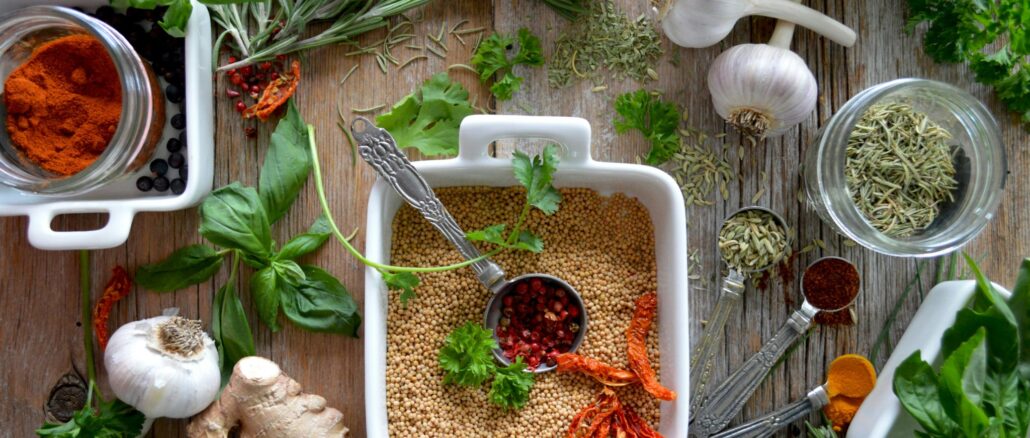
Living with celiac disease or gluten intolerance is not just a dietary restriction; it’s a lifestyle that comes with its own set of challenges. For those with these conditions, the simple act of choosing a meal or going out to eat can be a daunting task, requiring constant vigilance to avoid the hidden presence of gluten. In this article, we’ll delve into the daily struggles faced by individuals living with celiac disease and gluten intolerance.
Living with celiac disease means a strict gluten-free diet. Gluten, found in wheat, barley, and rye, is present in many common foods. Navigating the grocery store becomes a time-consuming task of scrutinising labels, ruling out beloved staples, and learning to decipher hidden gluten sources.
The social aspect of dining can become a minefield for those with celiac disease. Dinner invitations, eating out with friends, or attending social events can be filled with anxiety. There’s a persistent fear of being a burden, having to explain the condition repeatedly, and often feeling left out as gluten-filled dishes dominate the menu.
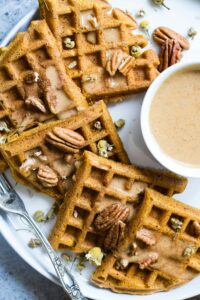
Avoiding gluten goes beyond choosing gluten-free items. Cross-contamination is a constant worry, especially in shared kitchens or dining spaces. The risk of utensils, cutting boards, or cooking surfaces being contaminated with gluten is a daily concern that requires meticulous attention.
Despite the growing awareness of gluten intolerance, finding safe dining options can be a challenge. Many restaurants may not fully grasp the severity of cross-contamination or may not have a dedicated gluten-free menu. This limitation can make dining out a rare and cautious experience.
Gluten consumption for those with celiac disease can lead to serious health issues, including damage to the small intestine, nutrient deficiencies, and long-term complications. Adhering to a strict gluten-free diet is not a choice but a necessity for maintaining one’s health.
Gluten-free alternatives often come with a hefty price tag. From specialised flours to pre-packaged gluten-free products, the cost of maintaining a gluten-free diet can be considerably higher, placing an additional burden on individuals and families.
Maintaining a balanced and diverse diet while being gluten-free can be challenging. The elimination of gluten-containing grains may lead to a reduction in dietary fibre, vitamins, and minerals. Individuals with celiac disease often need to work closely with healthcare professionals or dieticians to ensure they are meeting their nutritional needs through alternative sources.
For those with celiac disease or gluten intolerance, travel can become a logistical challenge. Navigating unfamiliar cuisines, languages, and dining practices can be stressful. Many find themselves researching extensively before a trip, packing their own gluten-free snacks, and communicating dietary restrictions with airlines and accommodations to ensure a safe and enjoyable journey.
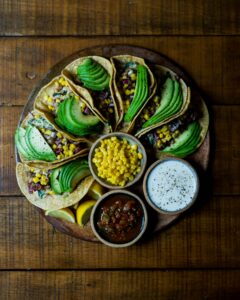
Coping with the constant vigilance required to maintain a gluten-free lifestyle can take an emotional toll. Feelings of frustration, anxiety, and even depression are not uncommon. The emotional burden is not only related to dietary restrictions but also stems from the challenges of socialising, the fear of being misunderstood, or facing skepticism about the seriousness of gluten intolerance.
While awareness about gluten intolerance is growing, not all locations or communities have easy access to gluten-free products. Rural areas or smaller towns may have limited availability of specialised gluten-free items, making it even more challenging for individuals living with celiac disease to find suitable alternatives.
The struggle to balance social life and health is a constant juggling act for those with celiac disease. Attending events, gatherings, or even family functions often involves careful planning, communication with hosts, and sometimes bringing their own meals to ensure they can participate without compromising their health.
Embarking on a gluten-free journey due to celiac disease or gluten intolerance doesn’t mean sacrificing flavour or variety. In fact, it opens the door to a world of inventive and delicious recipes that cater to dietary restrictions while satisfying the palate. Here, we present a trio of gluten-free recipes that not only address the challenges faced by those with gluten-related conditions but also celebrate the joy of diverse and flavourful meals. From a refreshing Quinoa Salad to a savoury Chicken and Vegetable Stir-Fry and concluding with delectable Banana Oat Muffins, these recipes are designed to prove that a gluten-free lifestyle can be both wholesome and indulgent. Let’s dive into the culinary realm where health-conscious meets scrumptious!
Gluten-Free Quinoa Salad:
Ingredients:
– 1 cup quinoa, rinsed and cooked
– 1 cup cherry tomatoes, halved
– 1 cucumber, diced
– 1/2 red onion, finely chopped
– 1/4 cup feta cheese, crumbled
– Fresh parsley, chopped
– Olive oil and lemon juice for dressing
– Salt and pepper to taste
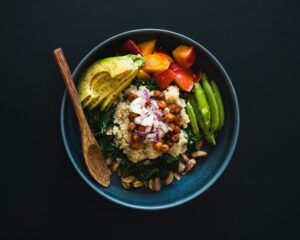
Instructions:
1. In a large bowl, combine the cooked quinoa, cherry tomatoes, cucumber, red onion, and feta cheese.
2. In a small bowl, whisk together olive oil, lemon juice, salt, and pepper to create the dressing.
3. Pour the dressing over the salad and toss gently to combine.
4. Garnish with fresh parsley and refrigerate for at least 30 minutes before serving.
Gluten-Free Chicken and Vegetable Stir-Fry:
Ingredients:
– 1 lb boneless, skinless chicken breast, thinly sliced
– 2 cups broccoli florets
– 1 bell pepper, thinly sliced
– 1 carrot, julienned
– 1 zucchini, sliced
– 3 cloves garlic, minced
– 2 tbsp gluten-free soy sauce
– 1 tbsp sesame oil
– 1 tbsp olive oil
– Rice or gluten-free noodles for serving
Instructions:
1. Heat olive oil in a large pan or wok over medium-high heat.
2. Add sliced chicken and cook until browned and cooked through.
3. Add minced garlic and stir for 1-2 minutes until fragrant.
4. Add broccoli, bell pepper, carrot, and zucchini to the pan. Stir-fry for an additional 5-7 minutes until vegetables are tender-crisp.
5. In a small bowl, mix gluten-free soy sauce and sesame oil. Pour over the chicken and vegetables, tossing to coat evenly.
6. Serve the stir-fry over rice or gluten-free noodles.
Gluten-Free Banana Oat Muffins:
Ingredients:
– 2 ripe bananas, mashed
– 2 eggs
– 1/4 cup coconut oil, melted
– 1/3 cup honey or maple syrup
– 1 tsp vanilla extract
– 1 3/4 cups gluten-free oats
– 1/2 tsp baking soda
– 1/2 tsp cinnamon
– Pinch of salt
– Optional: nuts, chocolate chips, or dried fruit for added texture
Instructions:
1. Preheat the oven to 350°F (175°C) and line a muffin tin with paper liners.
2. In a large bowl, whisk together mashed bananas, eggs, melted coconut oil, honey or maple syrup, and vanilla extract.
3. In a separate bowl, combine gluten-free oats, baking soda, cinnamon, and salt.
4. Add the dry ingredients to the wet ingredients and mix until just combined.
5. If desired, fold in nuts, chocolate chips, or dried fruit.
6. Spoon the batter into the muffin cups, filling each about 2/3 full.
7. Bake for 18-20 minutes or until a toothpick inserted into the centre comes out clean.
These recipes provide delicious alternatives for those with celiac disease or gluten intolerance, offering a variety of flavours while ensuring a gluten-free lifestyle.
Living with celiac disease and gluten intolerance is a multifaceted journey that goes beyond the avoidance of gluten-containing foods. From facing dietary restrictions and navigating social challenges to dealing with emotional and financial strains, individuals with these conditions exhibit remarkable resilience. It is crucial for society to continue fostering understanding, promoting inclusivity, and supporting research initiatives to improve the quality of life for those navigating the complexities of celiac disease and gluten intolerance.
SheSociety is a site for the women of Australia to share our stories, our experiences, shared learnings and opportunities to connect.

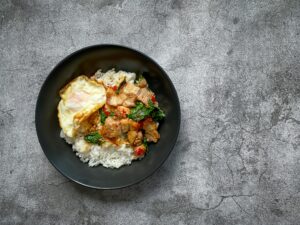
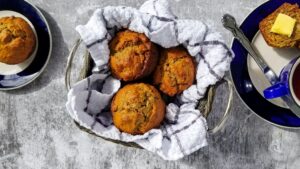
Leave a Reply